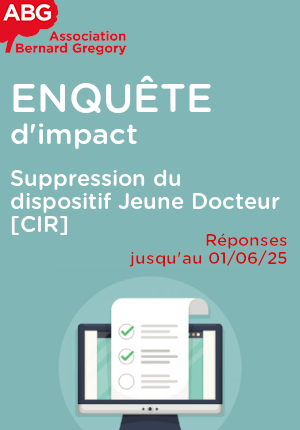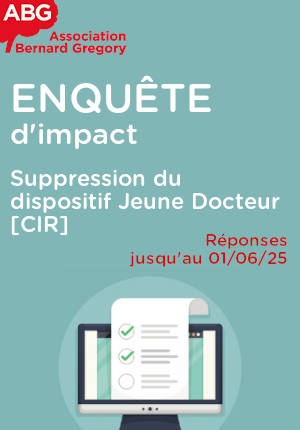Optimisation du procédé de méthanisation sous haute pression et suivi par spectroscopie optique // Optimization of methanogenic process under high pressure and its monitoring by optical spectroscopy
|
ABG-132106
ADUM-66124 |
Thesis topic | |
| 2025-05-21 | Public funding alone (i.e. government, region, European, international organization research grant) |
Université de Limoges
LIMOGES CEDEX - Nouvelle Aquitaine - France
Optimisation du procédé de méthanisation sous haute pression et suivi par spectroscopie optique // Optimization of methanogenic process under high pressure and its monitoring by optical spectroscopy
- Computer science
Méthanisation, haute pression, matrice organique et biodéchet, métabolisme d'hydrolyse, polymère extracellulaire (EPS), spectroscopie optique
Methanization, high pressure, organic matrix and biowaste, hydrolysis metabolism, extracellular polymeric substances (EPS), optical spectroscopy
Methanization, high pressure, organic matrix and biowaste, hydrolysis metabolism, extracellular polymeric substances (EPS), optical spectroscopy
Topic description
Le procédé de méthanisation ou digestion anaérobie (DA) permet de produire du biogaz (mélange de méthane (CH4) et de dioxyde de carbone (CO2) majoritairement) à partir de biodéchets (boue de station d'épuration, déchet agricole…). La méthanisation est réalisée grâce à un consortium séquentiel de microorganismes en 4 étapes métaboliques [1,2] : 1) l'hydrolyse, étape limitante, où la matière organique (MO) polymérique est dégradée en monomères, 2/3) l'acidogénèse/acétogénèse qui produit des acides gras volatils (AGVs), du CO2 et du H2, 4) la méthanogénèse qui produit du CH4 et du CO2. Les conditions physico-chimiques de la DA impactent la quantité de biogaz produit ainsi que le %CH4 du biogaz (de 40 à 60%). Le biogaz constitue une source d'énergie renouvelable avec un potentiel de développement élevé. De plus, le biogaz pourrait être valorisé en énergie sans surcoût si la pureté en CH4 est au moins de 90%. Le challenge est donc de trouver les conditions qui permettront une production sûre, et avec un seul ouvrage, d'un biogaz de haute qualité. Un procédé à Haute Pression (HP), inférieure à 4 bars pour des ouvrages sécurisés, permettrait d'augmenter la pureté du biogaz. Pour cela, il faut se focaliser sur l'étape de l'hydrolyse de la DA, jamais étudiée en conditions HP. L'objectif est d'optimiser les conditions d'un procédé DA en HP en une seule étape afin de produire un biogaz de qualité équivalente au gaz naturel. Pour cela, nous étudierons d'abord l'impact de « MO polymérique type » sur la production et la pureté du biogaz à des pressions ≤ 4 bars. Nous établirons par la suite un modèle permettant de prédire la production de CH4 selon les conditions physico-chimiques (dont la pression), en fonction du type de MO, après avoir réalisé un plan d'expérience. Enfin, lors de notre étude nous souhaitons développer une méthode rapide pour l'analyse du biogaz et des AGVs via une technologie innovante basée sur la spectroscopie laser MCARS (multiplex coherent anti-Stokes Raman scattering) [3].
------------------------------------------------------------------------------------------------------------------------------------------------------------------------
------------------------------------------------------------------------------------------------------------------------------------------------------------------------
The biomethanization or anaerobic digestion (AD) process allows to produce biogas (mixture of methane (CH4) and carbon dioxide (CO2) mainly) from biowaste (sewage sludge, agricultural waste, ...). Biomethanization is carried out by a sequential consortium of microorganisms in 4 metabolic stages [1,2]: 1) hydrolysis, limiting stage, where the polymeric organic matter (OM) is degraded into monomers, 2/3) acidogenesis/acetogenesis which produces fatty volatile acids (FVAs), CO2 and H2, 4) methanogenesis which produces CH4 and CO2. The physicochemical conditions of the AD impact the quantity of biogas produced as well as the %CH4 of the biogas (from 40 to 60%). Biogas constitutes a renewable energy source with high development potential. In addition, biogas could be used directly as energy without additional cost if the CH4 purity is at least 90%. The challenge is therefore to find the conditions which will allow safe production, with a single step, of high-quality biogas. A High Pressure (HP) process, less than 4 bars for secure structures, would increase the purity of the biogas. To do this, we must focus on the AD hydrolysis stage, which has never been studied under HP conditions. The objective is to optimize the conditions of a one-step AD process in HP, to produce biogas of quality equivalent to natural gas. To do this, we will first study the impact of “typical polymeric MO” on the production and purity of biogas at pressures ≤ 4 bars. We will subsequently establish a model to predict the production of CH4, depending on the physico-chemical conditions (including pressure) and on the type of OM, and based on an experimental plan. Finally, during our study we wish to develop a rapid method for the analysis of biogas and FVAs via an innovative technology based on MCARS (multiplex coherent anti-Stokes Raman scattering) laser spectroscopy [3].
------------------------------------------------------------------------------------------------------------------------------------------------------------------------
------------------------------------------------------------------------------------------------------------------------------------------------------------------------
Début de la thèse : 01/10/2025
WEB : https://www.unilim.fr/e2lim
------------------------------------------------------------------------------------------------------------------------------------------------------------------------
------------------------------------------------------------------------------------------------------------------------------------------------------------------------
The biomethanization or anaerobic digestion (AD) process allows to produce biogas (mixture of methane (CH4) and carbon dioxide (CO2) mainly) from biowaste (sewage sludge, agricultural waste, ...). Biomethanization is carried out by a sequential consortium of microorganisms in 4 metabolic stages [1,2]: 1) hydrolysis, limiting stage, where the polymeric organic matter (OM) is degraded into monomers, 2/3) acidogenesis/acetogenesis which produces fatty volatile acids (FVAs), CO2 and H2, 4) methanogenesis which produces CH4 and CO2. The physicochemical conditions of the AD impact the quantity of biogas produced as well as the %CH4 of the biogas (from 40 to 60%). Biogas constitutes a renewable energy source with high development potential. In addition, biogas could be used directly as energy without additional cost if the CH4 purity is at least 90%. The challenge is therefore to find the conditions which will allow safe production, with a single step, of high-quality biogas. A High Pressure (HP) process, less than 4 bars for secure structures, would increase the purity of the biogas. To do this, we must focus on the AD hydrolysis stage, which has never been studied under HP conditions. The objective is to optimize the conditions of a one-step AD process in HP, to produce biogas of quality equivalent to natural gas. To do this, we will first study the impact of “typical polymeric MO” on the production and purity of biogas at pressures ≤ 4 bars. We will subsequently establish a model to predict the production of CH4, depending on the physico-chemical conditions (including pressure) and on the type of OM, and based on an experimental plan. Finally, during our study we wish to develop a rapid method for the analysis of biogas and FVAs via an innovative technology based on MCARS (multiplex coherent anti-Stokes Raman scattering) laser spectroscopy [3].
------------------------------------------------------------------------------------------------------------------------------------------------------------------------
------------------------------------------------------------------------------------------------------------------------------------------------------------------------
Début de la thèse : 01/10/2025
WEB : https://www.unilim.fr/e2lim
Funding category
Public funding alone (i.e. government, region, European, international organization research grant)
Funding further details
Concours pour un contrat doctoral
Presentation of host institution and host laboratory
Université de Limoges
Institution awarding doctoral degree
Université de Limoges
Graduate school
653 Sciences et Ingénierie
Candidate's profile
Diplômé(e) d'un bac +5 en sciences (chimie, biochimie, environnement, ...), vous faites preuve de curiosité et possédez une attirance pour les sujets transversaux qui nécessitent des compétences pluridisciplinaires, avec de bonnes connaissances en pratique de laboratoire (mise en oeuvre BMP, chimie analytique, caractérisation des matières organiques) et un intérêt pour la réalisation d'expérimentations en laboratoire. Des connaissances en spectroscopie optique seraient appréciées. Des capacités rédactionnelles en français et en anglais sont attendues.
------------------ With a 5-year university degree in science (chemistry, biochemistry, environmental sciences, ...), you demonstrate curiosity and have an affinity for transversal subjects that require multidisciplinary skills, with a good knowledge of practical laboratory work (BMP implementation, analytical chemistry, characterization of organic materials) and an interest in carrying out laboratory experiments. Any knowledge in optical spectroscopy would be appreciated. Writing skills in French and English are expected.
------------------ With a 5-year university degree in science (chemistry, biochemistry, environmental sciences, ...), you demonstrate curiosity and have an affinity for transversal subjects that require multidisciplinary skills, with a good knowledge of practical laboratory work (BMP implementation, analytical chemistry, characterization of organic materials) and an interest in carrying out laboratory experiments. Any knowledge in optical spectroscopy would be appreciated. Writing skills in French and English are expected.
2025-06-03
Apply
Close
Vous avez déjà un compte ?
Nouvel utilisateur ?
More information about ABG?
Get ABG’s monthly newsletters including news, job offers, grants & fellowships and a selection of relevant events…
Discover our members
 TotalEnergies
TotalEnergies  Groupe AFNOR - Association française de normalisation
Groupe AFNOR - Association française de normalisation  Nokia Bell Labs France
Nokia Bell Labs France  MabDesign
MabDesign  ANRT
ANRT  PhDOOC
PhDOOC  ADEME
ADEME  ASNR - Autorité de sûreté nucléaire et de radioprotection - Siège
ASNR - Autorité de sûreté nucléaire et de radioprotection - Siège  Tecknowmetrix
Tecknowmetrix  CESI
CESI  Laboratoire National de Métrologie et d'Essais - LNE
Laboratoire National de Métrologie et d'Essais - LNE  MabDesign
MabDesign  Généthon
Généthon  Ifremer
Ifremer  Institut Sup'biotech de Paris
Institut Sup'biotech de Paris  CASDEN
CASDEN  ONERA - The French Aerospace Lab
ONERA - The French Aerospace Lab  Aérocentre, Pôle d'excellence régional
Aérocentre, Pôle d'excellence régional  SUEZ
SUEZ







